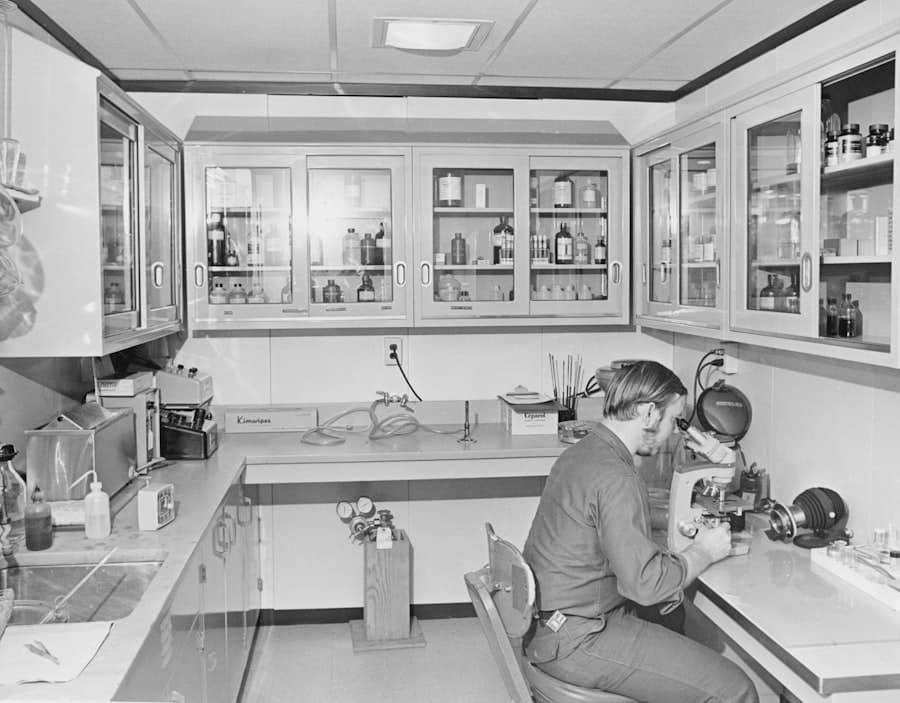The field of prosthetics has undergone a remarkable transformation over the past few decades, driven by groundbreaking innovations in biotechnology. These advancements have not only improved the functionality and comfort of prosthetic devices but have also significantly enhanced the quality of life for individuals with limb loss. The integration of biological principles with engineering and technology has led to the development of smart prosthetics that can adapt to the user’s needs, providing a more natural and intuitive experience.
As we delve into the various facets of biotech innovations in prosthetics, it becomes evident that this intersection of disciplines is reshaping the landscape of rehabilitation and mobility. Biotech innovations in prosthetics encompass a wide range of technologies, from advanced materials to sophisticated control systems. The evolution of these devices reflects a deeper understanding of human anatomy and physiology, allowing for designs that mimic natural limb movement more closely than ever before.
This article will explore the pivotal role of 3D printing, sensor technology, artificial intelligence, and material science in the development of smart prosthetics, as well as the ethical considerations that accompany these advancements. By examining these elements, we can appreciate how biotech innovations are not only enhancing prosthetic functionality but also paving the way for a future where mobility is accessible to all.
Key Takeaways
- Biotech innovations are revolutionizing prosthetics by enhancing functionality and user experience.
- 3D printing enables customized, affordable, and complex smart prosthetic designs.
- Advanced sensors improve prosthetic limb responsiveness and user control.
- Artificial intelligence integration allows adaptive and intuitive prosthetic device performance.
- Ethical considerations are crucial in developing biotech prosthetics to ensure accessibility and user safety.
The Role of 3D Printing in Smart Prosthetics
3D printing has emerged as a revolutionary technology in the field of prosthetics, enabling the creation of customized devices that cater to the unique needs of individual users. This additive manufacturing process allows for rapid prototyping and production, significantly reducing the time and cost associated with traditional prosthetic fabrication methods. By utilizing 3D printing, prosthetists can design and produce limbs that are tailored to fit the specific anatomical contours of a patient, ensuring a more comfortable and functional fit.
This customization is particularly beneficial for children, whose limbs grow rapidly, necessitating frequent adjustments or replacements. Moreover, 3D printing facilitates the incorporation of complex geometries and lightweight structures that enhance both performance and aesthetics. For instance, researchers have developed prosthetic limbs with intricate lattice designs that provide strength while minimizing weight.
Additionally, 3D printing enables the use of biocompatible materials that can be integrated with living tissue, further blurring the lines between artificial and biological limbs. As this technology continues to evolve, it holds the promise of making high-quality prosthetics more accessible to a broader population, particularly in underserved regions where traditional manufacturing methods may be impractical.
Advancements in Sensor Technology for Prosthetic Limbs

The integration of advanced sensor technology into prosthetic limbs has significantly enhanced their functionality and user experience. Sensors play a crucial role in providing real-time feedback about the user’s movements and environment, allowing for more intuitive control of the prosthetic device. For example, pressure sensors embedded in the foot of a prosthetic limb can detect changes in terrain and adjust the stiffness of the ankle accordingly.
This capability enables users to navigate various surfaces—such as grass, gravel, or stairs—more effectively, mimicking the natural responses of biological limbs. Furthermore, advancements in electromyography (EMG) sensors have revolutionized how users interact with their prosthetics. EMG sensors detect electrical signals generated by muscle contractions in the residual limb, translating these signals into commands for the prosthetic device.
This technology allows for more precise control over movements, enabling users to perform complex tasks such as grasping objects or adjusting their grip strength based on the weight or texture of an item. As sensor technology continues to advance, we can expect even greater levels of integration and responsiveness in prosthetic devices, ultimately leading to a more seamless user experience.
The Integration of Artificial Intelligence in Prosthetic Devices
Artificial intelligence (AI) is playing an increasingly vital role in the development of smart prosthetics, enhancing their adaptability and functionality. By leveraging machine learning algorithms, AI can analyze data from sensors and user interactions to optimize the performance of prosthetic devices. For instance, AI systems can learn an individual’s walking patterns over time and make real-time adjustments to improve gait efficiency and stability.
This capability not only enhances user comfort but also reduces the risk of falls and injuries associated with improper gait mechanics. Moreover, AI can facilitate predictive analytics that anticipate user needs based on historical data. For example, if a user frequently engages in activities that require rapid changes in direction or speed—such as playing sports—an AI-enabled prosthetic can adjust its settings accordingly to provide optimal support during those activities.
This level of personalization is unprecedented in traditional prosthetics and represents a significant leap forward in user-centered design. As AI technology continues to advance, we can expect even more sophisticated algorithms that will further enhance the interaction between users and their prosthetic devices.
The Impact of Biotech Innovations on Prosthetic Functionality
The impact of biotech innovations on prosthetic functionality is profound and multifaceted. Enhanced materials, advanced control systems, and intelligent feedback mechanisms have collectively transformed how prosthetics operate and how users experience them. For instance, lightweight composite materials have replaced traditional metals in many prosthetic designs, resulting in devices that are not only easier to wear but also more durable and resilient under various conditions.
These materials can withstand significant stress while maintaining flexibility, allowing for a more natural range of motion. Additionally, innovations such as powered prosthetics have introduced new levels of functionality that were previously unattainable. These devices utilize motors and actuators to assist with movement, enabling users to perform tasks that require significant strength or precision.
For example, powered hands equipped with multiple degrees of freedom can replicate complex hand movements such as typing or playing musical instruments. This level of functionality not only enhances daily living activities but also empowers users to engage in hobbies and professions that were once thought impossible after limb loss.
Biotech Innovations in Prosthetic Material Science

Material science has played a pivotal role in advancing prosthetic technology by introducing new materials that enhance performance while ensuring user comfort. Traditional prosthetics often relied on rigid materials that could cause discomfort over extended wear periods; however, recent developments have led to the creation of flexible yet durable materials that better mimic human tissue properties. For instance, silicone elastomers are now commonly used for socket liners due to their soft texture and ability to conform to the residual limb’s shape.
In addition to comfort, advancements in material science have also focused on improving the durability and functionality of prosthetics. Researchers are exploring bioactive materials that promote tissue integration and reduce complications associated with long-term use. These materials can interact with biological tissues at a cellular level, facilitating better acceptance by the body and minimizing issues such as skin irritation or infection.
Furthermore, innovations such as self-healing materials are being investigated for their potential to extend the lifespan of prosthetic devices by automatically repairing minor damages.
The Future of Smart Prosthetics: Biotech Innovations on the Horizon
Looking ahead, the future of smart prosthetics is poised for even more remarkable advancements driven by ongoing research and development in biotechnology. One promising area is the exploration of neural interfaces that allow direct communication between the brain and prosthetic devices. By bypassing traditional control methods such as EMG signals, these interfaces could enable users to control their prosthetics through thought alone, offering unprecedented levels of precision and responsiveness.
Additionally, advancements in regenerative medicine may lead to breakthroughs in creating biohybrid prosthetics—devices that incorporate living cells or tissues alongside synthetic components. Such innovations could result in prosthetics that not only restore function but also promote healing and integration with the body’s biological systems. As researchers continue to explore these frontiers, we can anticipate a future where smart prosthetics are not merely tools but extensions of the human body itself.
Ethical Considerations in the Development of Biotech Innovations for Prosthetics
As biotech innovations continue to reshape the landscape of prosthetics, ethical considerations become increasingly important. One major concern revolves around accessibility; while advanced technologies hold great promise for improving quality of life, they may also exacerbate existing disparities if they remain out of reach for certain populations due to cost or availability. Ensuring equitable access to these innovations is crucial for fostering inclusivity within society.
Moreover, ethical dilemmas arise regarding data privacy and security as smart prosthetics become more interconnected through AI and sensor technologies. The collection and analysis of personal data raise questions about who owns this information and how it may be used or shared. Striking a balance between innovation and ethical responsibility will be essential as we navigate this rapidly evolving field.
Engaging stakeholders—including users, healthcare providers, ethicists, and policymakers—in discussions about these issues will be vital for guiding the responsible development and deployment of biotech innovations in prosthetics.
Biotech innovations are revolutionizing the field of smart prosthetics, enhancing functionality and user experience for individuals with limb loss. For a deeper understanding of how technology is influencing various sectors, you might find the article on marketing technologies for 2023 insightful, as it explores the intersection of technology and user engagement, which is also relevant in the development of advanced prosthetic solutions.
FAQs
What are smart prosthetics?
Smart prosthetics are advanced artificial limbs equipped with sensors, microprocessors, and sometimes AI technology to mimic natural limb movements and improve functionality for users.
How do biotech innovations contribute to smart prosthetics?
Biotech innovations contribute by integrating biological signals, such as muscle or nerve impulses, with electronic components to create prosthetics that respond more naturally and intuitively to the user’s intentions.
What types of sensors are used in smart prosthetics?
Common sensors include electromyographic (EMG) sensors that detect muscle activity, pressure sensors, accelerometers, and gyroscopes to monitor movement and provide feedback for precise control.
Can smart prosthetics be controlled by the user’s thoughts?
Yes, some smart prosthetics use brain-computer interfaces (BCIs) or nerve signal detection to allow users to control the prosthetic limb through neural activity or thought patterns.
What role does 3D printing play in smart prosthetics?
3D printing enables customized, lightweight, and cost-effective prosthetic components tailored to the user’s anatomy, enhancing comfort and functionality.
Are smart prosthetics suitable for all types of limb loss?
Smart prosthetics can be designed for various levels of limb loss, including partial hand, arm, leg, or foot amputations, but suitability depends on individual medical conditions and rehabilitation needs.
How do smart prosthetics improve the quality of life for users?
They provide enhanced mobility, dexterity, and sensory feedback, allowing users to perform daily tasks more easily and improving independence and confidence.
What challenges exist in developing smart prosthetics?
Challenges include high costs, complex integration of biological and electronic systems, durability, battery life, and ensuring intuitive user control.
Are there any ethical considerations with smart prosthetics?
Ethical considerations involve accessibility, privacy of neural data, long-term health effects, and ensuring equitable access to advanced prosthetic technologies.
Where can someone learn more or get fitted for a smart prosthetic?
Individuals can consult specialized prosthetic clinics, rehabilitation centers, or healthcare providers who work with biomedical engineers and prosthetists experienced in smart prosthetic technology.

